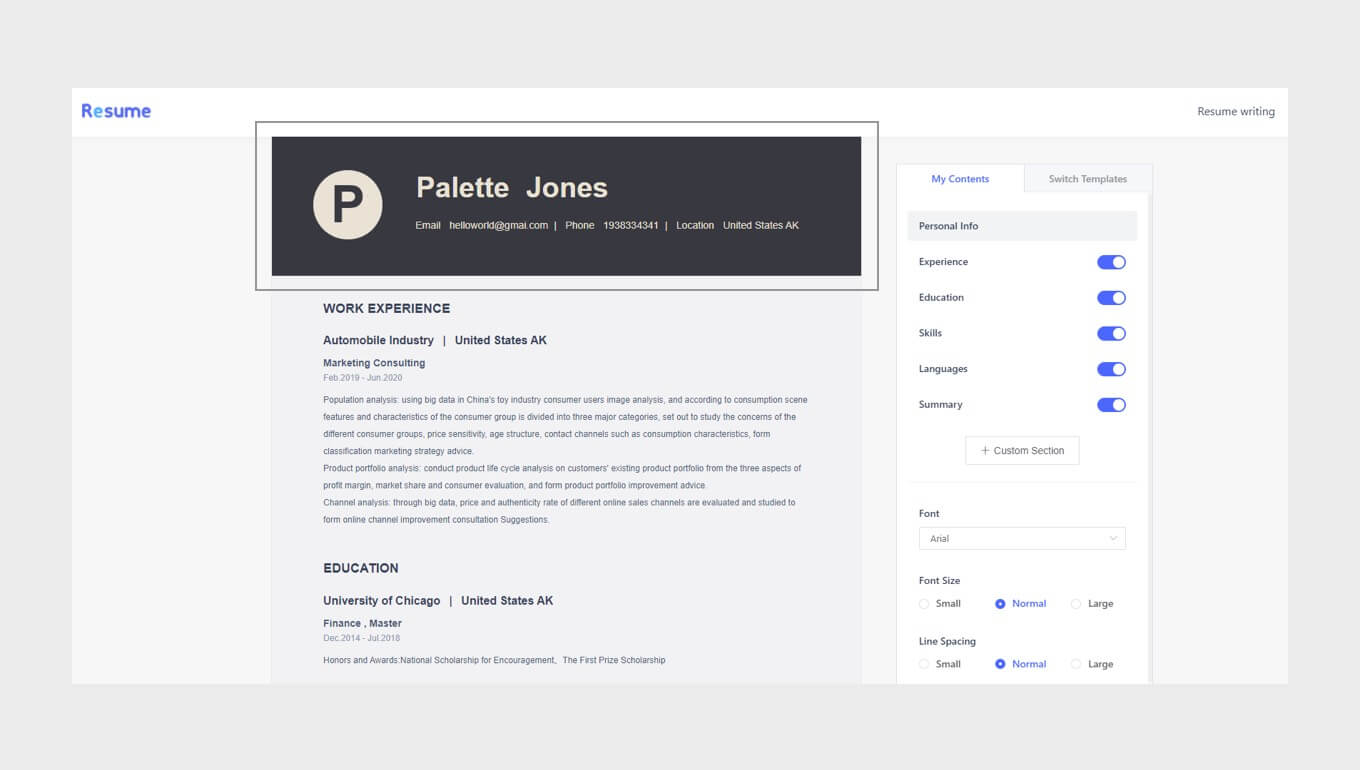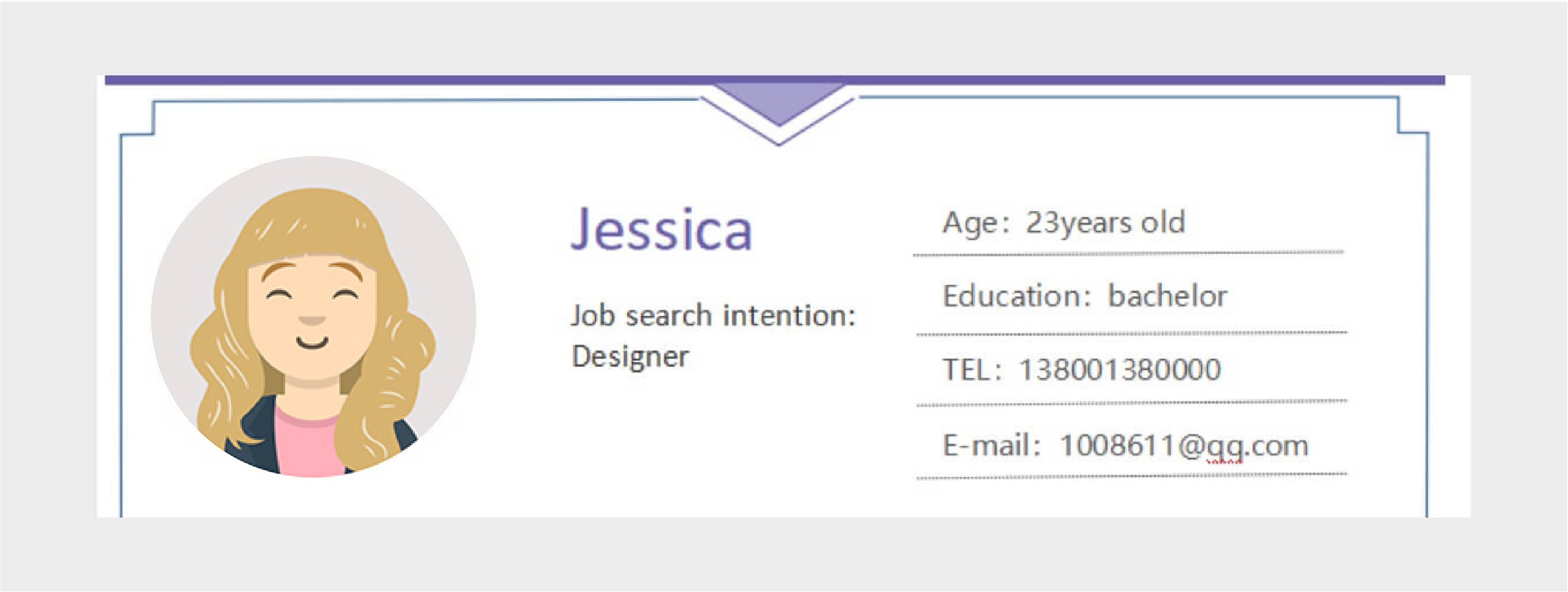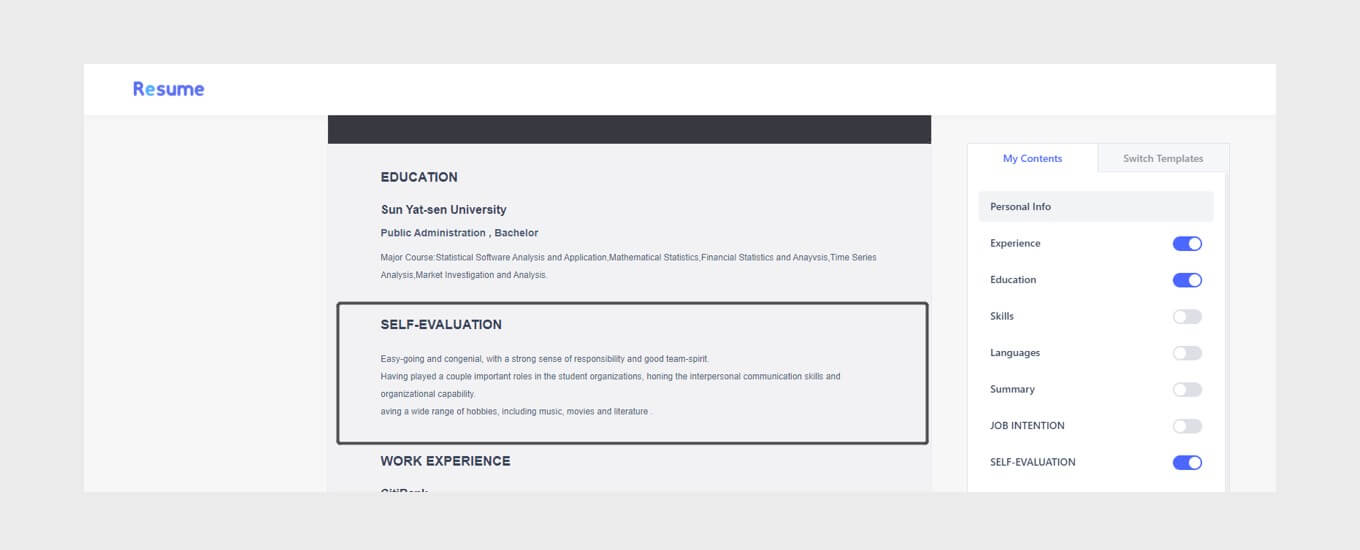How to Write a Perfect Resume?
A good resume will greatly help you find a suitable job! Here are some guidances about how to write a perfect resume, come and read more details!
What is a resume?
Simply speaking, a resume is a written profile of personal and job-related knowledge, abilities, skills, and work experience, which facilitates the company to make preliminary judgments on the job seeker’s job direction, work scope, and previous positions. In most cases, a resume is the first way for the company to get to know the job applicant.
Why is it essential to write a good resume?
-
A good resume determines the company's first impression on job seekers, as candidates' logic, ability to organize, and professionalism can be reflected easily by the style of a resume.
-
A good resume can concisely show the job seeker's technical level and job intention.
-
A good resume allows the employer to make preliminary judgments quickly and lays the foundation for further communication.
What does a good resume look like?
A good resume has the following characteristics:
-
Try to be as concise as possible: For candidates with little work experience, there is not too much content to write. In this case, a resume of one page is enough. For executives with more than ten years of work experience, a two-page resume is sufficient. Recent experience can be written with more details, and early experience should be simple.
-
Clearly organized: Too much content is not recommended. HR has to process dozens or even hundreds of resumes every day, and it is sometimes a very tedious task. So the time spent on a single resume is generally 1-2 minutes. A logical and concise resume helps them browse quickly. On the contrary, you are likely to be eliminated if the content is too complicated.
-
Highlight the key points: For the job applicants, it's better to highlight the corresponding knowledge, skills, and experience so that HR can immediately take a look when they see the resume. If HR reads a resume for 2-3 minutes and cannot figure out the content, then the resume is likely to be forgotten.
-
Simple style: Resume with gorgeous content is also not recommended. It is suggested to print your resume on white A4 paper with black ink. After all, job hunting is serious. In the case of resume aesthetic fatigue, even a specially designed resume can hardly attract the attention of HR. In some cases, it is not a big deal to use an elaborate resume, such as a design position that has special requirements for personality or beauty.
All in all, a good resume can not only reflect the advantages of job seekers but also allows the company to make preliminary judgments quickly.
How to write a perfect resume?
A complete resume includes personal information, job intention, self-evaluation (technical expertise), educational background, work experience, project experience, and other components. Next, the details of how to write the resume will be displayed in the following parts.
1. Personal information

Personal information is the kind of seemingly unimportant but essential part. The personal information mainly includes two parts:
-
Name: which must be written.
-
Contact: Both your phone number and your email address is essential so that the employer can contact you in time. Make sure that the information is correct.
2. Job intention

Job intention is critical, but many job seekers and recruiters do not take care, which leads to lots of time and energy waste. Senior professionals usually have clear job intentions, while fresh graduates always have broad job intentions. Suitable job seekers are people with very clear job intentions. The job intention reflects the job seeker's future career planning and thinking about the career. It generally includes the following aspects.
Expected industry: For candidates whose industry direction is not clear, you can write down multiple industries in which you are interested.
Expected career: Write according to your career plan. Many fresh graduates can't make a clear career path, so it is suggested to write a broad career direction, such as marketing. However, do remember not to write several different career directions on a resume, such as putting sales and HR at the same time.
Of course, they are more specific in the position and industry direction for some professionals when applying for a new job, and they are very clear about their job prospects. You can label out your job-seeking expectations under the job intentions.
The more accurate the description of job intentions, the less time and energy the job seeker will spend on their job search.
3. Self-evaluation (technical expertise)

The self-evaluation part focuses on describing one's professional advantages. The content must be related to the position and highlight your strengths concerned with the position.
The self-evaluation part is easy to write falsely, and many people don’t know how to write it. Once the self-evaluation is written well, job seekers can confidently show their ability and make recruiters impressed. If not, it will just expose your shortcomings.
What are the characteristics of good self-evaluation?
-
The content is mainly based on personal advantages related to the position. It can be the applicant's skills, the resources, the relevant experience, etc. The content should be concrete.
-
The key points should be prominent and highly related to the position being applied for.
-
It is best to have some relevant proofs of ability, such as personal patents, papers in an important publication, personal technical blogs, work performance, etc.
4. Educational experience and training experience

An excellent academic background does not necessarily help vocational skills, but it is an important threshold for job hunting. Only after crossing this academic threshold can you be eligible to apply. Corresponding positions, especially some well-known companies, have clear academic requirements for external recruitment. Educational experience can be written from the first degree in the university to the highest degree. If the academic background does not meet the requirements, the following methods can be considered:
-
Highlight the candidates' advantages related to the position.
-
Focus on recruitment channels, look for friends in the company to introduce yourself, or find HR and directly tell them their advantages for the job position.
In short, you can strengthen the employer’s confidence in their professional skills through informal application channels.
For many technical positions, the threshold is getting higher and higher; people with low academic qualifications have fewer career opportunities. If you want to get more opportunities, you can struggle in the following aspects:
-
Strengthen the learning ability. Only with stronger abilities can you get better opportunities.
-
Expand industry influence, such as participating in more technical forums, publishing high-quality technical articles.
5. Work experience

Work experience is the most important part of a resume. For positions that require certain expertise, work experience is the most important part of a resume. The following elements should be concerned:
-
Working time: The working time must be specified for each work period; it can even be specific to the month. HR will pay more attention to each job's working time and the time gap when selecting resumes.
-
Company title: Many companies have legal person names, company brand names, and company product names. Use the most famous name and note the company's main business and industry level.
-
Position: Some companies may have their own specific job title, but you are suggested to use job titles on your resume that are commonplace in the workforce. If you have worked in the same company for many years and have experienced multiple positions, you can describe different positions in different periods.
-
Job Responsibilities: Job responsibilities should not be too complex or too simple; just describe them in a straightforward way to make sure HR can understand your work experience.
-
Work performance: For functional and technical work, you can write successful project experience and project results; for business work, you can write business returns, annual sales, etc.
The work performance must be true, which means that the performance you write must withstand scrutiny; otherwise, it will be useless for your job hunting. For example, in a project-based sales position, someone wrote that they sold 5 million in a certain project, but they were actually just a handyman. Such work performance is easy to be questioned.
6. Project experience
A brilliant project experience can add a lot to your resume. Several elements of project experience that need to be described are as follows:
-
Project name: fill in according to the actual name of the project.
-
Project introduction: roughly describe the project background, project environment, and project goals.
-
Project position: the role of the applicant in the project.
-
Project responsibilities: the specific responsibilities undertaken in the project and the specific work done to complete the responsibilities.
-
Project results and personal contributions.
Writing a good project experience section shows you have participated in a good project and played an important role. On the other hand, it proves your ability to summarize and learn new things. In the interview process, the commonly used STAR method can help to answer questions about your experience.
STAR interview method and project experience. You can use the STAR method to write your project experience. The STAR method is composed of the first letter of four words: situation, task, action, and result.
S = Situation. Background of the project, difficulties.
T = Task. What is the size of the team? What is your specific role in the team?
A = Action. How do to complete the task? What problems did you encounter in the process of completing the task? How was it resolved?
R = Result. What is the result of the work?
That’s all for a complete resume. Of course, there are also other factors like personal hobbies, salary expectations, etc. You can fill these in according to your needs. It still needs to be emphasized that the premise of writing a resume is that we do our job well and have strong professional skills.


